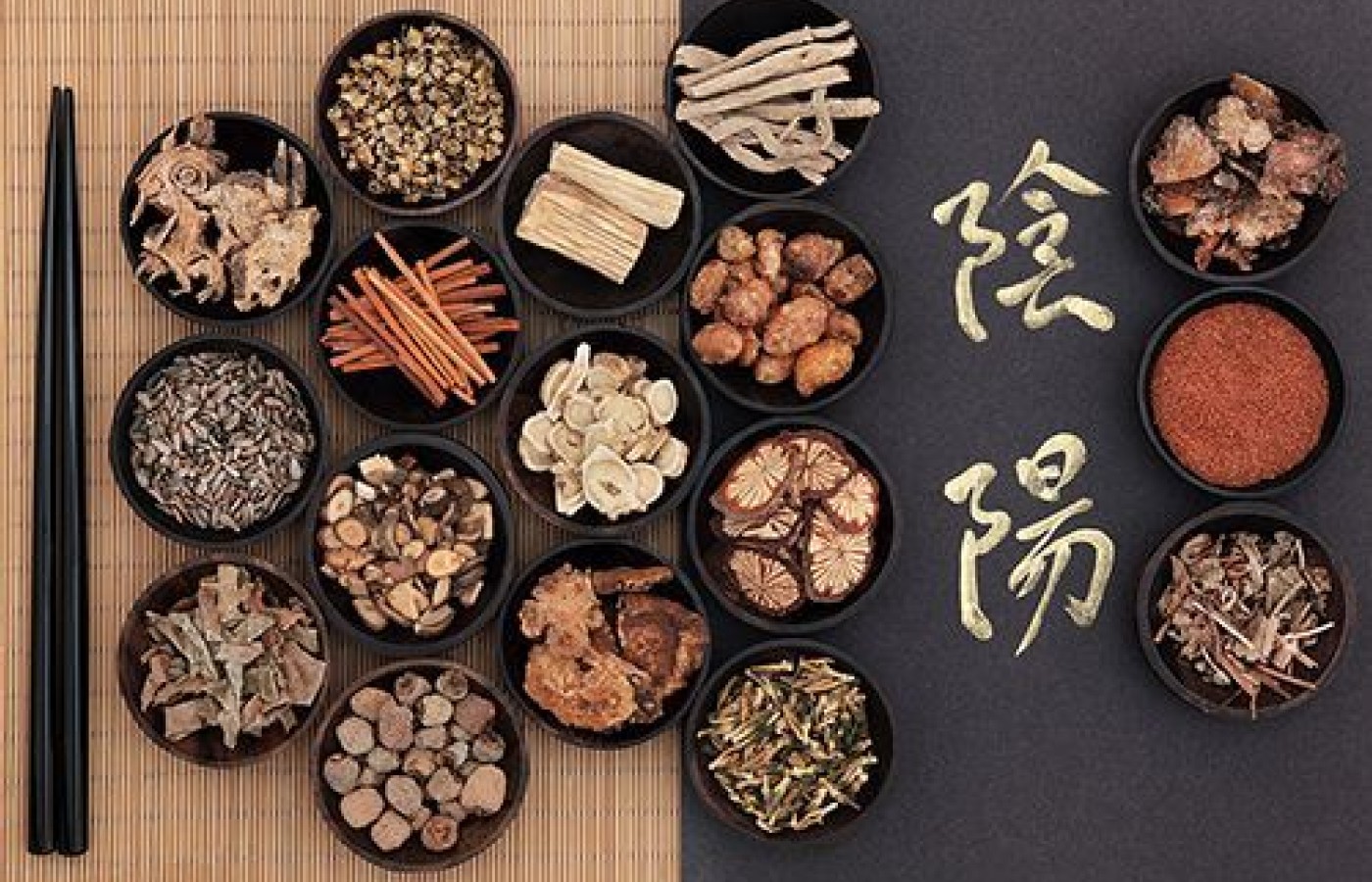Whether you accept it, avoid it or live somewhere in between, insurance coverage has become a defining issue for our profession. Patients increasingly expect to use their benefits, practitioners want to be compensated fairly for their time and expertise, and the system itself remains – at best – fragmented. The encouraging news is that coverage has expanded in meaningful ways. The challenging news is that reimbursement, across the board, remains inadequate.
Chinese Herbs & Allergens: Labeling With Caution
The growing prevalence and awareness of allergen-related side effects from consumable goods begs the question, “Are we labeling potential allergens appropriately?” The Food and Drug Administration (FDA) has required allergen labeling for over a decade. The ingredients the FDA focuses upon are responsible for “90 percent of all food allergies.”1 Chinese herb formulas may contain potential allergens not typically recognizable to consumers and not currently required by the FDA. Practitioners can provide an excellent service to patients by understanding the food allergen labeling law, the ingredients necessary to label, and additional Chinese herbs that are worth discussing (and labeling) with sensitive patients.
The Allergen Labeling Law
The Food Allergen Labeling and Consumer Protection Act (FALCPA) became law in 2004 (Title II of Public Law 108-282). The purpose of FALCPA was to set requirements for supplements or foods that contain a major food allergen, or proteins associated with allergens, to be appropriately labeled for consumers.
Section 403 of the Federal Food, Drug and Cosmetic Act from 1938 requires that food “fabricated from two or more ingredients declare each ingredient by its common or usual name.” FALCPA was needed to assist consumers of food and supplement products further because allergens became both more prevalent and widely known as causes of illness. Consumers required help identifying potential antagonists. Some labels under section 403 were initially not clear enough for those suffering from allergen sensitivities.1 What are the major 8 allergens?
- Milk
- Egg
- Fish
- Crustacean shellfish
- Tree Nuts
- Wheat
- Peanuts
- Soybeans (or processed with soy)
Chinese medicine practitioners must ensure their prescriptions carry allergen labels for the ‘major eight’ allergens. The agency released a “Final Guidance” October 5, 2005 that breaks down specific areas required for labeling allergens. For example, if a product contains tree nuts or fish, the particular type of nut and fish/shellfish must be labeled. The deadline for dietary supplements to comply with allergen labeling requirements was January 1, 2006.1 Chinese Herb practitioners serve patients best when they contract with companies that label allergens in compliance with federal regulations.
What You Should Label
Label any ingredient that derives from a potential allergen, since labeling products is a public safety concern, especially in the case of potential allergens. FALCPA wants consumers to have access to clear language that avoids ambiguity. Labels are not compliant when they do not state the source product of the allergen. Listing “whey” isn’t adequate; the label must also say “milk.”
A product that derives from a potential allergen must label that allergen source. Perhaps there is a belief that a particular processing method may mitigate the potential threat of an allergic response. In this case, opinions shall not interfere with patient rights. For example, some individuals may be allergic to shrimp, but tolerate glucosamine made from shrimp. Perhaps because glucosamine derives from shrimp shells, not shrimp flesh where the protein that initiates an allergic response resides. Although allergic reactions have not been problematic with shell-derived glucosamine, it is sourced from shellfish and must label as such.
Patient’s and their doctors have the right to know what products are in their prescription. If you have done research on a particular processing method and you believe potential antagonists transform enough to render the allergen source inactive, then offer your patient the information and allow them to decide with their doctor if the risk is worth it. The Chinese herbal compendium offers creative ways around potential allergens, why take a chance?
If you want to get an idea of what a safety recall by the FDA looks like, check out their website. Notice how many products you find recalled for “Undeclared” ingredients related to potential allergens.3

Gluten is the ingredient my patients ask about most. The FDA only requires labeling for “wheat,” not gluten. There is an entirely different required level of compliance for products that state “Gluten Free,” so please do not include that into your labeling practice without investigating those guidelines. Some product lines wisely list gluten as a known ingredient. Subhuti Dharmananda writes a detailed article regarding the presence of gluten in Chinese herbs entitled, Gluten in Chinese Herbs: Addressing the Concerns of Those with Celiac Sprue. He points out three commonly used herbs with gluten, in three popular formulas.4
- Fu Xiao Mai (Triticum aestivum), Wheat, present in Gan Mai Da Zao Tang
- Mai ya (Hordeum vulgaris) Malt sprouted barley, present in Jian Pi Wan
- Shen Qu (Massa Fermentata) fermented wheat/malt combined with herbs, present in Bao He Wan
What Do Allergic Responses Look Like?
In many cases, an allergic response will happen within two-hours of ingestion (or application) of an herb. Symptoms can range from a mild rash to severe anaphylaxis a potentially life-threatening reaction requiring emergency medical attention. Visit the Food Allergy Research & Education website to learn of symptoms so you can educate your patients ([url=http://www.foodallergy.org/life-with-food-allergies/food-allergy-101/symptoms-of-an-allergic-reaction-to-food]http://www.foodallergy.org/life-with-food-allergies/food-allergy-101/symptoms-of-an-allergic-reaction-to-food[/url]).5 If using surface releasing herbs, make sure to inform your patient of the potential for itching or rash, so they do not confuse this intended side effect with an allergic reaction.
More Potential Allergens
The example of FALCPA’s requirement for the labeling of “wheat” not “gluten” points to the chasm between what is required labeling by the FDA and the product knowledge of experts in the field dealing with patients. As a licensed Chinese herb practitioner, it is wise to consider an expanded list of potential allergens that might negatively affect your patients. Review this list of commonly used Chinese herbs with potential allergens, to be mindful when formulating for a patient, or monitoring unexpected side effects. Gluten:
- Fu Xiao Mai, Fructus Tritici Levis (Xiao Mai), Wheat
- Gu Ya, Fructus Oryzae Germinatus, Oryza Sprouts
- Mai Ya, Fructus Hordei Germinatus, Barley Sprout
- Yi Tang, Maltosum, Barley Sugar
- Shen Qu, Massa Fermentata, Medicated Leaven
Latex (mild to severe allergic response, including anaphylaxis (a life-threatening shock reaction). (See Bob Flaws explanation on latex sensitivities in a previous issue of Acupuncture Today: (May 2002):6
- Du Zhong, Cortex Eucommiae, Eucommia Bark
- Pu Gong Ying, Herba Taraxaci, Dandelion (less common)
Animal & Insect
- Di Long, Pheretima, Earthworm
- Lu Rong, Cornu Cervi, Deer Antler
- Quan Xie, Buthus, Scorpian
Volatile Oils
- Bai Jie Zi, Semen Sinapis, Mustard
- Bing Pian, Borneolum, Borneol
- Mo Yao, Resina Myrrhae, Myrrh
Ragweed (herbs in the asteraceae [daisy] family):
- Huang Chu Ju, Marticaria recutita (German Chamomile), Chamaemelum nobile (Roman Chamomile), M matricaroids (Manzanilla), Chamomile
- Ju Hua, Flos Chrysanthemi, Chrysanthemum Flower
- Pu Gong Ying, Herba Taraxaci, Dandelion
- Belongs to the Compositae plant family (a ragweed cross sensitivity).
- Xiao Bai Ju, Tanacetum parthenium, Feverfew
Nightshades
- Gou Qi Zi, Fructus Lycii, Goji Berries
Seeds
- Bai Jie Zi, Semen Sinapis Albae, Mustard Seed
- Hu Ma Ren, Semen Sesami Nigrum, Sesame
Mushrooms
- Ling Zhi, Ganoderma Lucidum, Ganaderma
- Mu Er, Auricularia Auricula Judae, Woodear
Common Chinese Herbs That Must be Labeled(According to FDA Law)
Crustacean Shellfish & Mollusks
- Ge Qiao, Concha Meretricis seu Cyclinae, Clam
- Hai Piao Xiao, Endoconcha Sepiae, Cuttlefish Bone
- Mu Li, Concha Ostreae, Oyster
- Shi Jue Ming, Concha Ostreae, Abalone
- Zhen Zhu Mu, Concha Margaritifera, Mother of pearl7
Wheat
- Shen Qu, Massa Fermentata, Medicated Leaven
- Xiao Mai, Fructus Tritici, (Fu Xiao Mai) Wheat
- Yi Tang, Maltosum, Maltose
Tree Nuts
- Bai Guo, Semen Ginkgonis Bilobae, Ginkgo
- Bai Zi Ren, Semen Biotae Orientalis/Platycladi Semen, Thuja
- Hu Tao Ren, Semen Juglandis, Walnut
- Li Zhi He, Semen Litchi Chinensis, Leechee Nut
- Rou Dou Kou, Semen Myristicae, Fleshy Cardamom
- Shen Qu, Massa Fermenta* (sometimes made with apricot/grains)
- Tao Ren, Semen Pruni Persicae, Persica
- Xing Ren, Semen Armeniacae, Apricot
- Yu Li Ren, Prunus Japonica, Bush Cherry Pit
Soy (potentially processed with soya-bean oil*)
- Dan Dou Chi, Semen Sojae Preparatum, Prepared Soybean
- E Jiao, Colla Corii Asini, Donkey-Hide Gelatin*
- Gui Ban Jiao, Colla Plastrum Testudinis,* Turtle Shell Gelatin
- Lu Jiao Jiao, Colla Cornus Cervi,* Deer Horn Gelatin
- Zhi He Shou Wu, Radix Polygoni Multiflori Praeparata,* Knotweed
Cross Contamination
Cross contamination is important when preventing allergic reactions in sensitive patients. If you compound herbs and don’t use current Good Manufacturing Practices (cGMP) designed to remove particles from previously prepared formulas, or herbs, you might consider outsourcing in certain cases.8 Not all potential allergens are listed in this summary. If you have a patient that is known to have extreme allergen sensitivities please do your homework! Use information wisely. Allergen warnings are not meant to create unnecessary concern. Chinese herb formula labels are complicated for patients.
Labeling topical Chinese herbs is also essential, since allergic contact dermatitis may occur. Even if you or your manufacturer do label an ingredient like Mo Yao (Myrrh), or Huang Chu Ju (Chamomile), the patient might not know if they are allergic since they may be unfamiliar with Chinese herbs. For this reason, you might recommend patients test topical medicines on a small portion of skin before exposing larger areas as good practice.
State-licensed Chinese medicine practitioners can help educate patients to prevent and understand unexpected side effects of potential allergens. Chinese herbal medicines offer plenty of options when it comes to designing the right formula for the patient. Pre-made supplements often don’t have this luxury.
Offer products in compliance with FDA labeling laws and take patient safety a step further with additional wisdom about ingredients such as gluten or latex. Confidently speak about potential allergens in your practice and with your suppliers. Practitioners are advocates for patient rights when it comes to product transparency.
If you are curious about whether or not the products you prescribe to your patients are under FALCPA requirements, visit:1 https://www.fda.gov/Food/GuidanceRegulation/GuidanceDocumentsRegulatoryInformation/Allergens/default.htm.
References
- U.S. Food & Drug Administration. “Food Allergens Guidance Documents & Regulatory Information.”
- American Academy of Allergy Asthma & Immunology. “Shellfish Allergy Can Be Dangerous.”
- U.S. Food & Drug Administration. “Recalls, Market Withdrawals, & Safety Alerts.”
- Dharmananda S. “Gluten in Chinese Herbs: Addressing the Concerns of Those with Celiac Sprue.” Institute for Traditional Medicine.
- Food Allergy Research & Education. “Symptoms of An Allergic Reaction to Food.”
- Flaws B. “Cortex Eucommiae Ulmoidis (Du Zhong) and Latex Allergy.” Acupuncture Today, 2002; 3(5).
- Food Allergy Research & Education. “Shellfish Allergy.”
- Allen KJ, Turner PJ, et al. “Precautionary labeling of foods for allergen content: are we ready for a global framework?” World Allergy Organization Journal, 2014; 7(1), 10.



